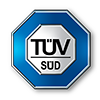Technical terms of quality management: V
Validation
Confirmation by the presentation of objective evidence that the requirements are fulfilled for a specific intended use or application. The term for the corresponding status is “validated”. The use conditions for validation can be either real or simulated. (On the basis of ISO 9000:2015)
Value added
Difference in a product‘s value before and after its manufacture. This classification is used when preparing a process map in order to evaluate process steps with regard to their contribution in adding value to the process. A process step can be “value added“ or “non value added”. A process step is value added if
- the process step changes the product
- the customer is willing to pay for the process step
- this process step is stipulated on the basis of statutory provisions or for the customer‘s safety.
Variable costs
Part of the (total) costs that change with the capacity utilization level.
Variable data
Variance
Measure of the deviation of a random variable from its expectation. This value is calculated by dividing the sum of the squared deviations by the mean by the number of measured values.
Variate
Quantity whose range of values is known but where it is not known which characteristic value it randomly takes on in a particular case.
(DGQ Volume 11-04:2009)
Variation
Differences between the values of a characteristic. (On the basis of ISO 3534-2)
VDA
Verband der Automobilindustrie e.V., Frankfurt. www.vda.de
VDA-QMC
Verband der Automobilindustrie – Quality Management Center. www.vda-qmc.de
VDE
Verband der Elektrotechnik Elektronik Informationstechnik e. V., Frankfurt. www.vde.de
VDI
Verein Deutscher Ingenieure, Düsseldorf. www.vdi.de
Verification
- Check of a measuring instrument with respect to the requirements of official gauging and calibration regulations and, when the requirements of these are fulfilled, identification in this regard.
Note: According to the verification regulations, such as the Eichgesetz and Eichordnung, verification of a measuring instrument includes the tests and inspections that are to be conducted and the identifications. It should be noticed that in this context, this concept covers more than just calibration or adjustment. (DGQ Volume 11-04:2009) - Confirmation on the basis of the presentation of objective evidence that specified requirements are fulfilled. The term for the corresponding status is “verified”. Confirmations can contain activities such as: alternative calculations; comparison of a new design specification with an already proven design specification; tests and demonstrations; and reviews of documents before they are issued. (On the basis of ISO 9000:2015)
Vision
The term used by the European Foundation for Quality Management to indicate formulations that describe how a company or an organization would like to be in the future. Visions act as mission statements that instruct on specific strategies, plans and actions but that themselves only outline the company‘s future form in general terms. The objective of visions is to sketch and contour the possibilities in the sense of an open horizon.
Visual synectics
Creativity technique. A variation of the classical synectics that works with picture presentations and descriptions. The visual perception serves as a stimulus to elicit associations. See Synectics meeting.
VOC (see also: Customer requirement)
= “Voice of the Customer”
Concept from Six Sigma; it stands for the customer‘s wishes or needs that are to be implemented into specific specifications for a company with regard to costs, time and quality. The customers can be internal (e.g., other departments) or external (e.g., end customers). See also: Customer requirement.
